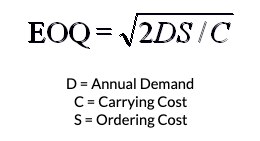Everything is better in moderation, they say. This is particularly true when it comes to inventory stock. There should not be too much or too little as it can greatly affect your sales and profitability. Here’s when inventory planning and management can help.
Companies that source, produce and manufacture raw materials must analyze demand, decide when and how much to order. This is called inventory planning. Effective inventory planning augments company efforts in forecasting demand while minimizing costs. It also reduces the amount of inventory stored (and therefore, storage costs) and make best use of their manufacturer’s space, time and equipment.
Merchants that deal with partially completed goods (called work in progress or WIP), finished goods and/or goods-in-transit to warehouses or customers (or GIT) must focus on inventory review and tracking.
You’re probably thinking… with all this work involved, why should I hold inventory, then?
There are 3 main reasons to hold inventory:
- Transaction Motive: Economies of scale. Buying raw materials in larger quantities and holding that inventory is known to be cheaper than buying in smaller lots. Large production brings down per unit cost. Inventory also makes it possible for manufacturers to specialize in the products they create. The finished products, then, can be stored in a warehouse and fulfill customer orders.
- Precautionary Motive: Inventory is used as protection against uncertainties when there’s a flux in demand. Main reason is to prevent stockouts. This move also caters to cyclical, seasonal and surges in demand. Companies stock up raw materials and hold inventory in order to increase production and rush supplies to the market to meet increased demand.
- Speculative Motive: Managers hedge on price increases in materials or labor, and must look at the trade-off between inventory cost and benefits. Inventory is also used as a buffer in critical supply chain interfaces including:
a. Supplier-procurement or purchasing
b. Procurement-production
c. Production-marketing
d. Marketing-distribution
e. Distribution-intermediary
f. Intermediary-consumer/user
Related blog: Identify & optimize top selling products with ABC inventory management












